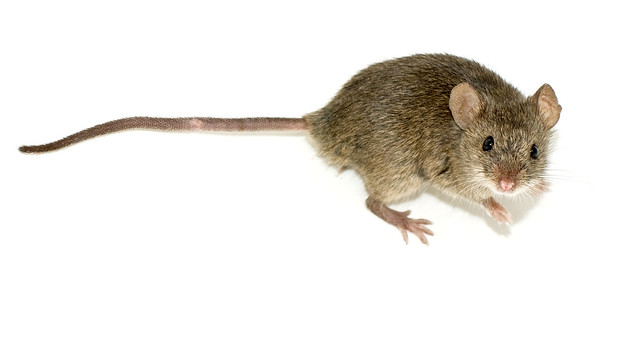
A group of ophthalmology researchers in China got caught trying to pull the wool over the eyes of readers by falsely claiming to have used a therapy that doesn’t exist.
As its title would indicate, the article, “Anti-angiogenic effect of Interleukin-26 in oxygen-induced retinopathy mice via inhibiting NFATc1-VEGF pathway,” by a team from Jinhua Municipal Central Hospital in Zhejiang, purported to show that IL-26 could prevent the growth of new blood vessels in mice with damaged retinas.
Per the abstract of the paper, which appeared in Biochemical and Biophysical Research Communications (BBRC):
Retinal neovascularization (RNV) is a devastating pathological feature of numerous ocular diseases and isa major cause of blindness. In this study, we examined the effect and potential mechanism of interleukin-26 (IL-26) in the pathogenesis of RNV in an oxygen-induced retinopathy (OIR) model. OIR model was induced by exposure of hypoxia (75% oxygen) to C57BL/6J mice from postnatal day 7 (P7) to P12 and then returned to room air. A significant up-regulation of IL-26 was detected in the retina at P17 after OIR, andthe expression of IL-26 was observed to be localized mainly in the retinal endothelial cells (RECs). Furthermore, recombinant (r) IL-26 could effectively prevented RNV by reduction the areas of RNV, andIL-26 deficiency markedly increased RNV formation. In addition, the increased expressions of nuclear factor of activated T-cell (NFATc) 1 and vascular endothelial growth factor (VEGF) in the retina at P17 after OIR were increased in IL-26/mice, and were down-regulated following rIL-26 treatment. Collectively, these data suggested a possibility that IL-26 suppressed RNV via NFATc1-VEGF pathway.
Except the data don’t suggest any such thing. Because they aren’t real.
According to the retraction notice:
The Journal received an expression of concern from a reader, which noted that:
“The problem is that there is no IL-26 gene in the mouse. They claim they bought the KO mouse and the mouse IL-26 protein but given that there is no mouse IL-26 gene, a purchase is not possible and in fact no such reagents are available. Furthermore they do reference and anti-IL-26 antibody but the spec sheet clearly states that it is only reactive with the human protein…., the Enzo Life Sciences online catalog does not have a listing for recombinant IL-26 of any kind.”
The authors apologize for their mistakes and have asked to retract the article.
Zhigang Lv, the corresponding author of the paper, told us in an email:
After publication of this article, We re-examined the recombinant IL-26 and the genotype of the transgenic mice for further other research. and we found that the genotype of this mice was NOT IL-26-knockout. So after careful consideration, we decided to withdraw this paper with great pity.
Lv added that:
It is very serious that we do not show rigorous scientific attitude. We are sorry for this misbehave. We want to minimize the adverse effect of this article, and don’t advise you to report it again.
We searched the Enzo catalog for “recombinant IL-26” and came up with this IL-33 product instead. Perhaps it’s not the job of reviewers or editors to do similar searches, but if they had, the paper wouldn’t have seen the light of day. Of course, knowing whether a gene exists in a given animal model might be something you’d expect a reviewer to know.
Preventing ‘silly’ errors
Meanwhile, Anita Bandrowski, who helped to create the Research Resource Identifier to track experimental resources like antibodies and model organisms, said the system likely would have flagged the impossibility of the mouse model prior to publication:
[T]he act of looking something up in a standard database will prevent many “silly” problems.
RRIDs are the “standard” that is being used for this purpose by Elsevier [which publishes BBRC] and many other publishers. If journals make this more mandatory they will prevent these sorts of problems.
On the other hand, credit to the journal for publishing the letter from the reader, however embarrassing, about the problem.
Like Retraction Watch? You can make a tax-deductible contribution to support our work, follow us on Twitter, like us on Facebook, add us to your RSS reader, sign up for an email every time there’s a new post (look for the “follow” button at the lower right part of your screen), or subscribe to our daily digest. If you find a retraction that’s not in our database, you can let us know here. For comments or feedback, email us at [email protected].
From my own experience in the social sciences, I think peer-review is broken. I still occasionally get what I consider constructive critique, but more often I get short, lazy comments designed to torpedo the work (and usually off-target). Unfortunately, many editors simply take the reviewers’ word for it and slam the door in your face.
This retraction shows how lazy reviewers can be. Shameful.
I have seen this many times, also. Another issue, it seems to me, is that people with insufficient expertise in the subject area are often asked to review manuscripts. This has happened to me on a frequent basis. I decline in these instances.
Here is another one..!! 🙂
https://www.biocompare.com/pfu/110627/soids/2-1009-345199/ELISA_Kit/ELISA_Mouse_IL-26
It would be so nice if some of the more powerful journal editorial boards would invite an in-print discussion of what peer reviewers’ lives would be like if their same attitudes and standards, much less too those of the scientists being reviewed, were applied in more concrete examples, for instance, in the food they eat, the water their children drink, and the vehicles’ brakes that they either encounter, ride in, pilot, or occasionally interact with.
The people who check those things don‘t do it in their spare time or late at night instead of sleeping, and all for free.